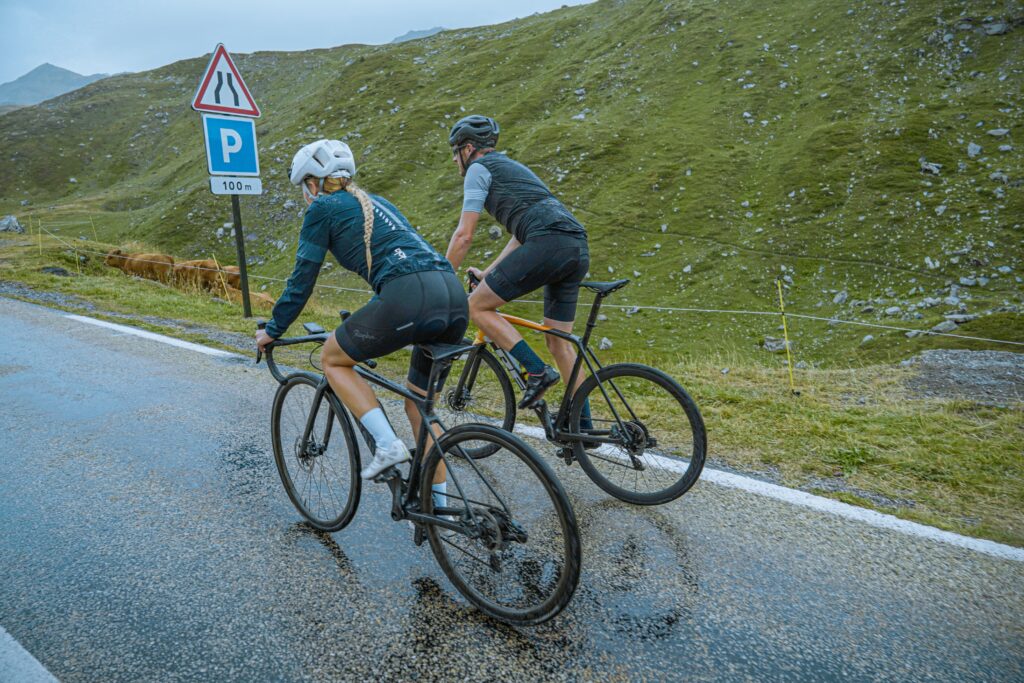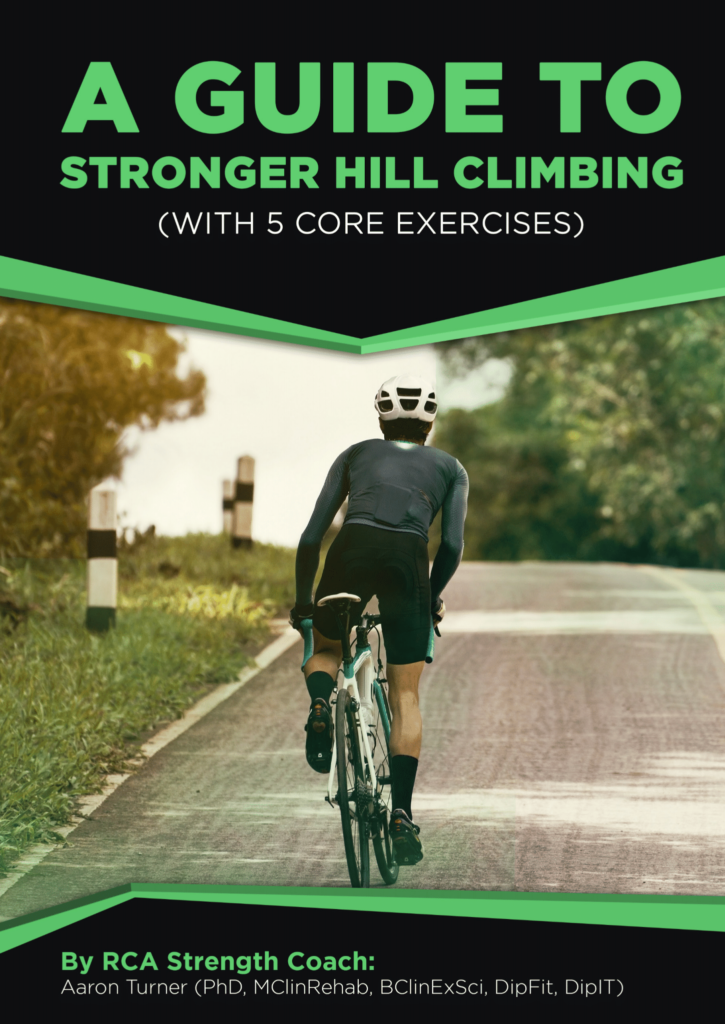Here’s how to stay consistent with your training as the weather turns and you’re forced indoors.

As the weather begins to get colder, it’s normal for the excuses to kick in.
That little voice that’s been silent all summer and fall is right on your back wheel. Your bed feels warmer, the mornings and evenings are darker, and your motivation wavers.
It becomes that little bit more difficult to get out on your bike. And you’re worried you’ll lose the fitness and the momentum you built up in the previous months. Don’t worry. In this blog post, we provide winter cycling training tips to help you get the most out of training in the colder months, allowing you to at least maintain your performance on the bike. But if you stay consistent and put in the work, you may even improve your functional threshold power (FTP) and overall cycling performance.
Start building your base
Winter is excellent for base training — with fewer cycling events and training demands, you can put some quality time in to improve your aerobic fitness. You’ll also prepare your body physiologically for the more intense season on two wheels.
Many cyclists think you need to train for hours in the winter to build your base. However, this is not true! Instead, focus on riding consistently to slowly improve your fitness. You should also add strength training to your routine — but more on that later in this article.
It’s much more realistic to train 3-4 days a week, for example, then yoyoing your way through the winter — you know, when you do a lot of hours one week, you take an entire week off from riding the following week and then perform some intervals the week after.
Focus on riding consistently to build your base.
Most of your base training rides should be done at zone 2 — that’s approximately 55-70% of your FTP and 60-70% of your max heart rate. Time spent in zone 2 improves your cardiovascular function, increases the number of myoglobin and mitochondria in the cells, and allows your musculoskeletal system to adapt to the stress.
And while the bulk of your base miles should be done at an endurance effort, look to sprinkle in a mix of intensities into your training. Tempo and threshold efforts are very effective and can easily be done indoors with a smart trainer.
Below, you’ll find a table of FTP power zones — use this to dial in your efforts to get the most out of your training.

Have a place to train indoors that you enjoy
If you live in a colder country prone to brutal winters, then you’ll have no choice but to spend the bulk of your time training indoors. Training apps such as Zwift and Wahoo Systm make indoor training more accessible than ever.
You’ll need a smart trainer for most sessions. A set of rollers will also work, but won’t be quite as effective. If possible, we suggest investing in your sacred place to train indoors. You want it to be fun, clean, and a place you enjoy training when the weather is at its worst.
If you don’t enjoy training or if your dedicated training space is littered with mess, you’re less likely to stick with your training.
So, set yourself up for success by organising your training space.
Focus on strength and conditioning work
It’s easy to neglect your strength and conditioning work, especially during the hotter months. After all, all you want to do is get out there and ride. It’s totally understandable!
But with less availability to ride outside during winter, it’s a better time than any to start strength training more.
If you’re currently going to the gym or doing strength training once a week, go twice a week instead. But don’t overdo it!
Focus on improving core strength to improve stability and power in and out of the saddle and strengthen the main muscles used during cycling to make climbing and riding easier. You’ll also increase your power-to-weight ratio. That’s not only a flex, but a practical use of your time spent off the bike.
Unilateral exercises such as walking lunges and single-leg presses are great to avoid muscular imbalances and transfer well over to your riding.
Other exercises you may choose to incorporate into your training include squats, Bulgarian lunges, glute bridges, nordic curls for the hamstrings, and other core exercises — which we have included in our guide to stronger hill climbing below.

Try your hand at cross training
As well as lifting weights, you might want to swap the cleats for a pair of running shoes or swimming goggles. Cross training can help you maintain and even improve your aerobic fitness. If you have a weak core, activities such as swimming can improve core and back strength. It’s also very low impact, so there’s little risk of hurting yourself.
Aside from the physiological benefits of adding new activities to your training schedule, it provides a much-needed mental break from cycling. Something we can all enjoy, no matter how much you love the sport.
Adjust your bike position for indoor riding
You might need to tweak your setup if you’re using a different bike for indoor training during the winter. Even if you’re using your regular bike, you might benefit from tweaking your bike position ever so slightly.
The first and primary adjustment we recommend is to adjust your saddle height. A saddle that is too low will cause you to rock side to side and may cause pain in your knees. On the other hand, a saddle too high may cause lower back pain and general discomfort. If it’s really high, you may struggle to touch the floor when you clip out of your pedals.
For more advice on how to get the right saddle set up, you can read our guide on how to find the right saddle height, or you can watch the video below with Neill Stanbury, physiotherapist and professional bike fitter.
Keep your training fun and interesting
If you don’t keep your sessions fun and interesting — and ideally with some added variety — then inevitably, you’re less likely to stick with it.
You don’t need to be overly regimented with your training during the winter.
For example, you can switch out an interval session with a Zwift race, a solo zone 2 ride for a social spin, or even try your hand at a few new efforts or workouts.
The more fun and varied your training, the more likely you are to stick with it. And the more you stick with it, the better you’ll become. It’s the difference between starting from 0 in spring and starting from 2. So stick with it!
Train at a mix of intensities (zones) and intervals
We’ve briefly mentioned this already, but you should try and train at a mix of intensities. Furthermore, while zone 2 training is excellent for building a solid foundation, or base, you want to mix it up with tempo efforts, sprints, and other high-intensity intervals to maintain, or even improve your FTP.
If you don’t know what sessions to do and want to keep your training varied — which we definitely recommend — why not try some of the recommended guided training sessions or group rides on Zwift? It’s an excellent way to get in some solid training with added intensity because you’re riding in a group. It’s also more fun!
Aim to maintain good quality consistently for good results
You don’t need to do big hours on the bike in the winter months. In fact, it’s a good idea to let your body rest and rebuild before increasing the intensity in a few months’ time. Instead, strive for good quality, consistent riding.
The more you do in the winter period — and that includes strength training — the better prepared you will be for spring and summer. Your fitness and FTP will be at a higher level than the year prior, and you’ll only increase it as the season progresses.
The bottom line
Cycling in winter is mentally and physically tough.
But if you can stay consistent and put in some good quality miles and perform strength training, you’ll be in an ideal position when the temperature rises and the seasons change. It’s the difference between starting from 0 and starting from 2.
If you take anything away from this article, let it be the following: you don’t need to do lots of hours on the bike, but you do need good quality training consistently to maintain or even improve your fitness over the colder months.
Key takeaways:
- Focus on quality base training
- Add strength & conditioning to your training
- Keep your training varied, fun and interesting
FAQs
How do pro cyclists train in the winter?
Pro cyclists often train in hot countries during the winter months to build a quality base to start the season. They also strength train, stretch, and do yoga.
How do cyclists stay in shape in winter?
Cyclists train indoors, primarily building a base to expand on later in the season. They also lift weights to increase strength, reduce muscular imbalances, and reduce their risk of injury.
How do I prepare for winter cycling?
Get a dedicated space for training indoors, write up a plan or work with a coach, and focus on consistent miles.

